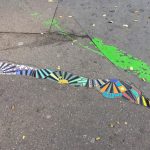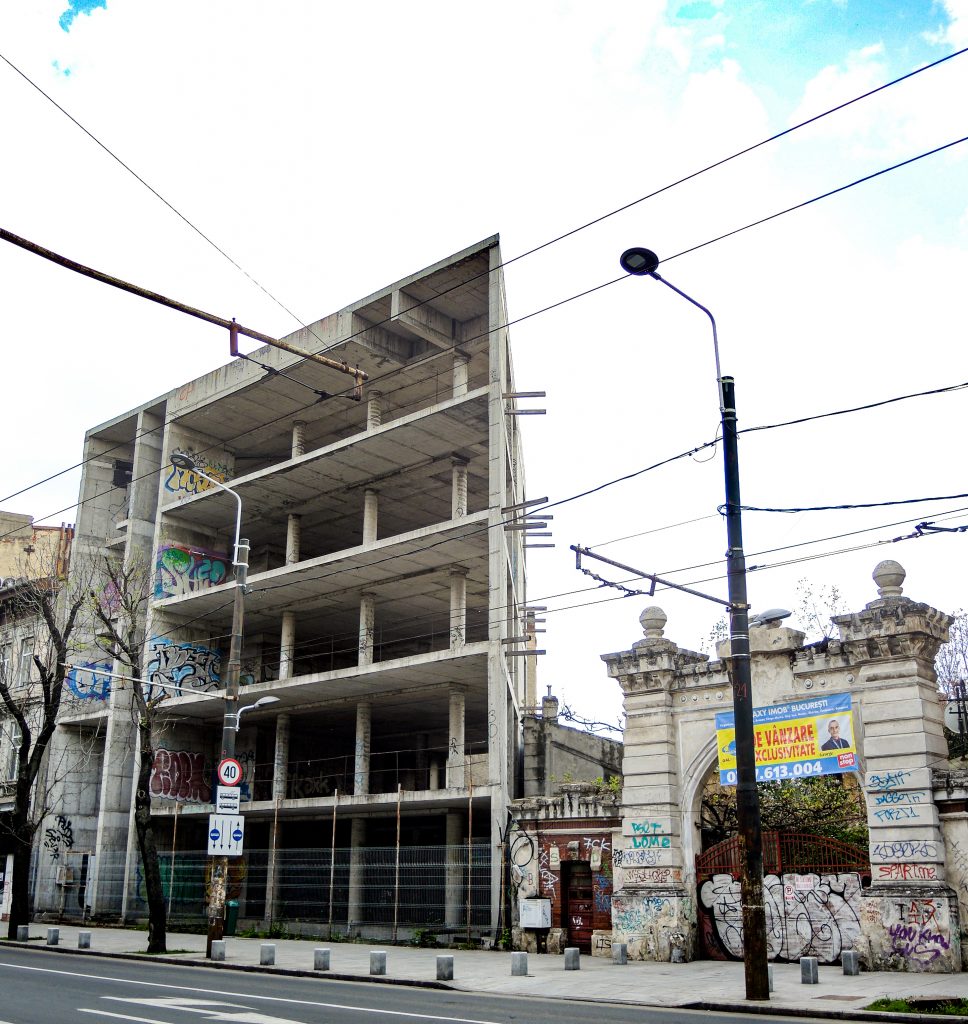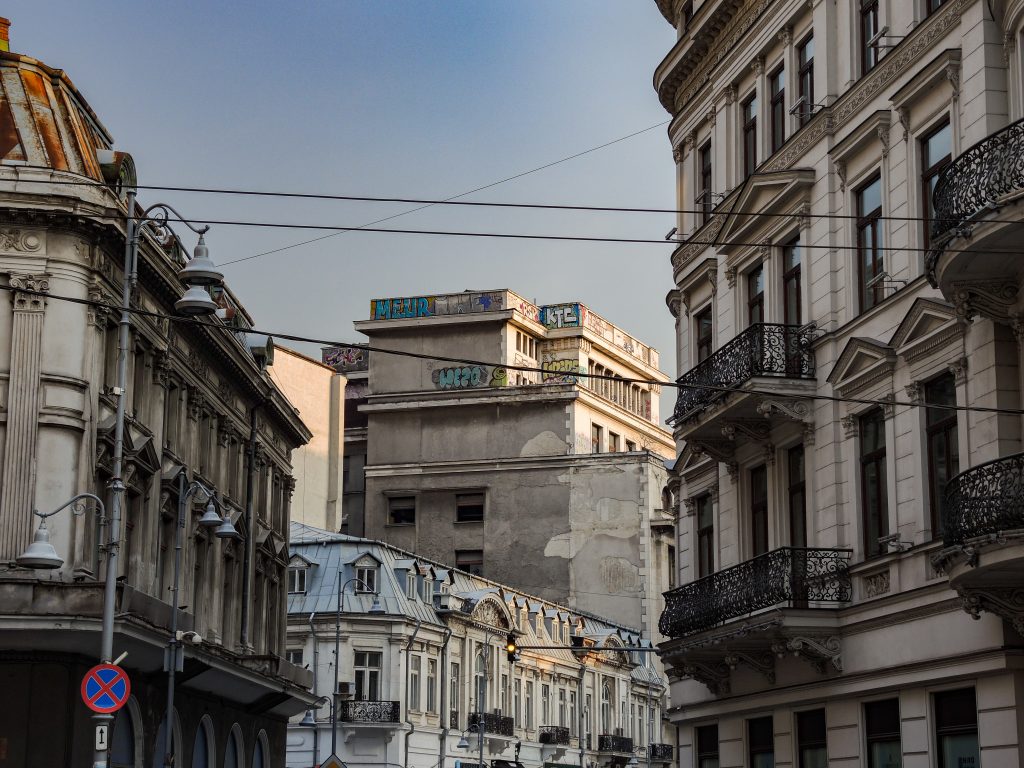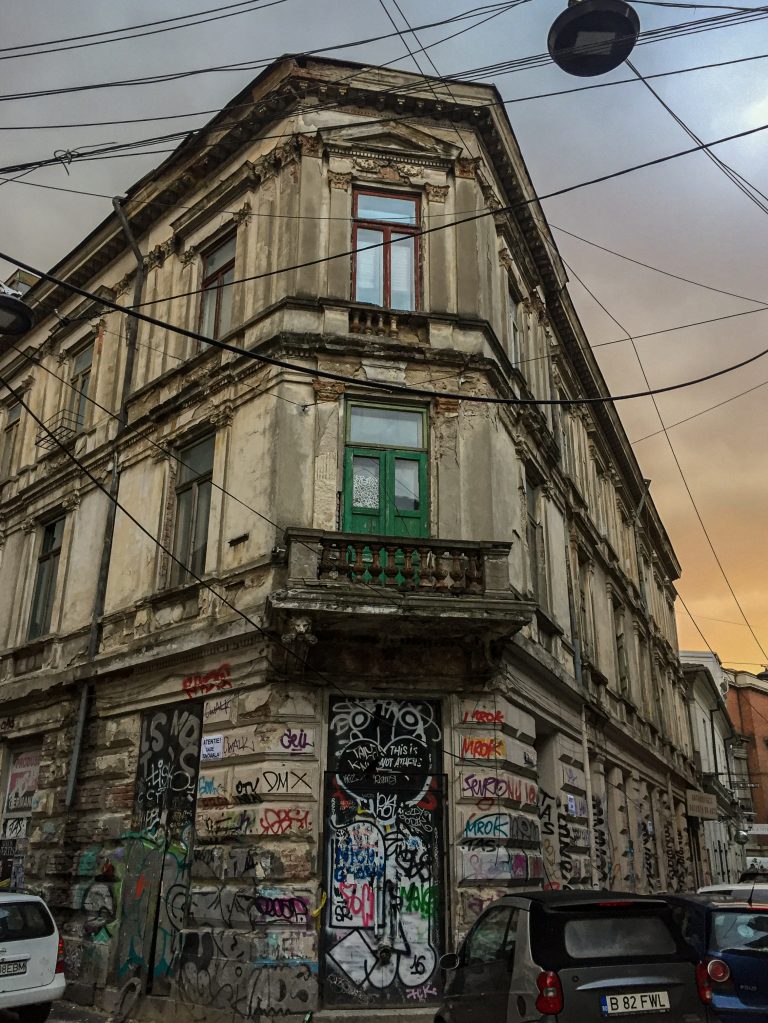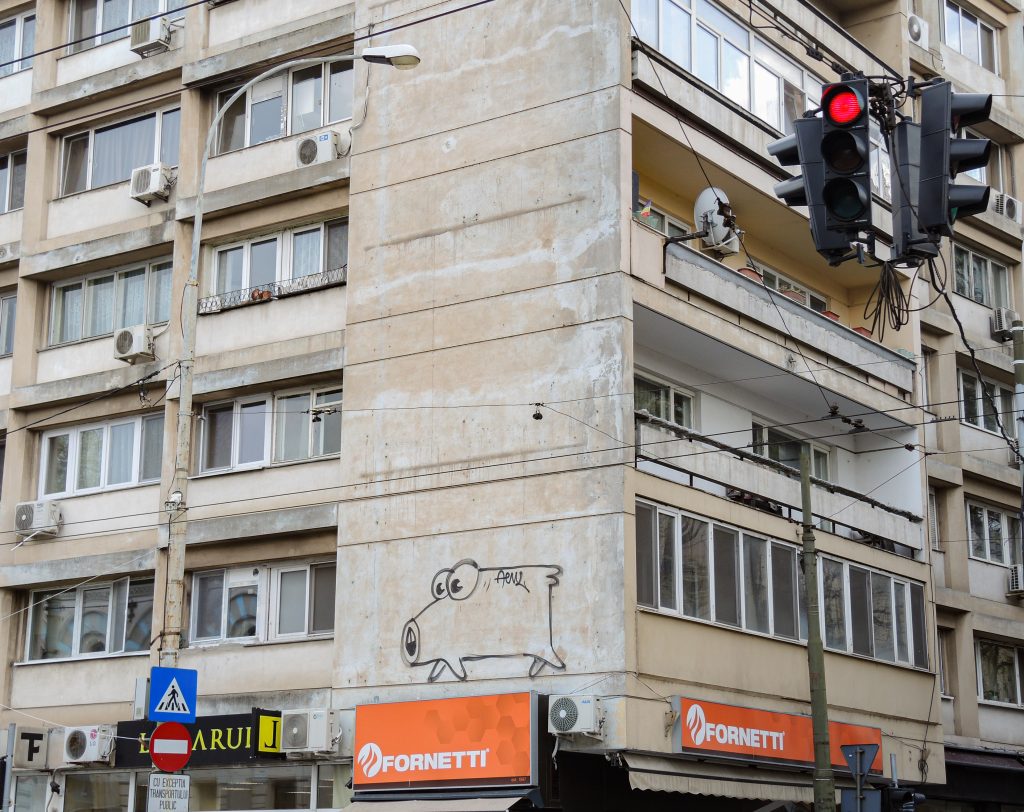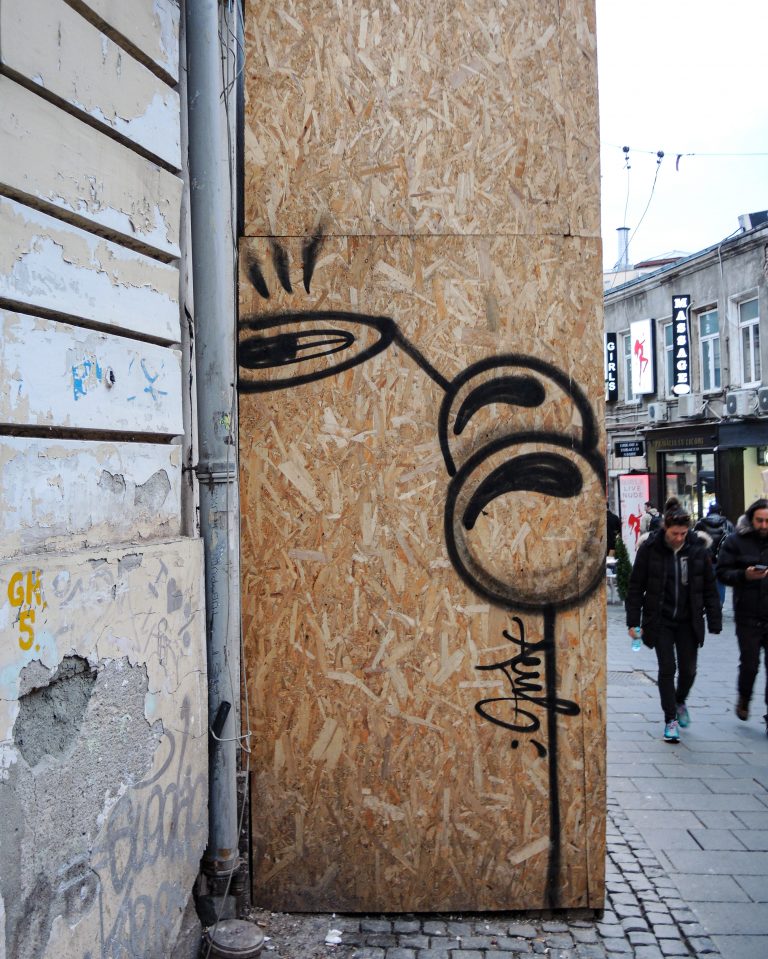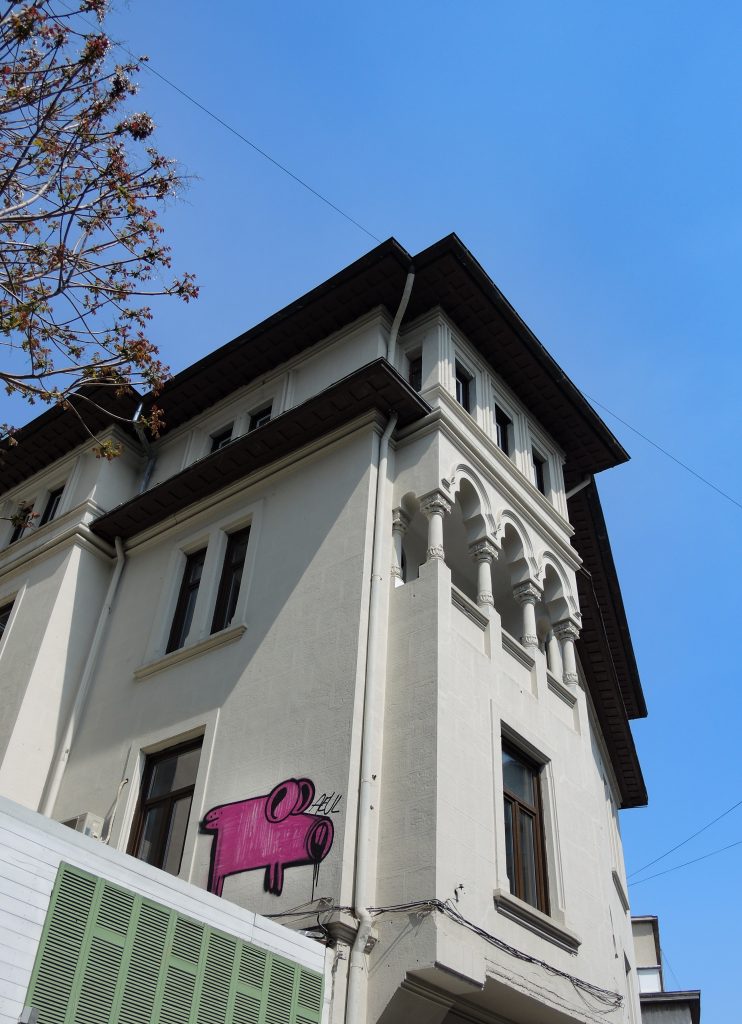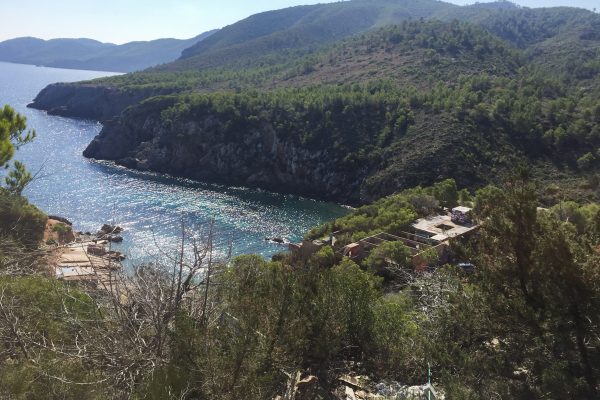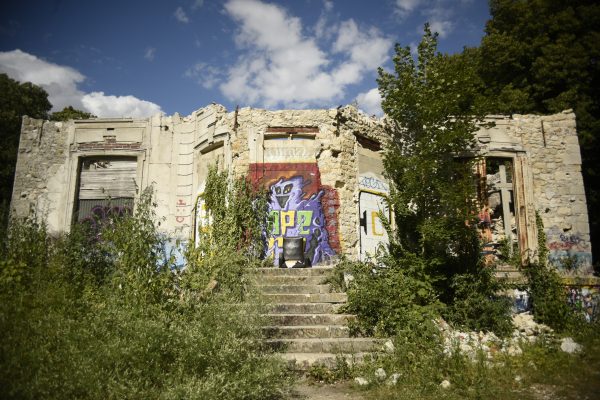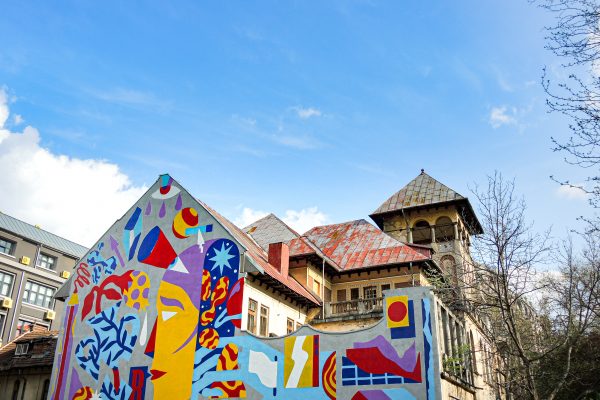Bucharest, the capital of Romania, is a city of many contrasts. Its architecture and urbanisation are the primary evidences of this. It’s striking the moment you lay your eyes on the city and wander between the different districts. Crumbling 19th-century buildings, massive Soviet-era buildings that have crushed the city centre, such as the actual Parliament building (largest palace built in the former USSR) and very modern buildings are clashing with one another within a few streets.
At a time when we can’t travel, I offer you a virtual trip to this city which fascinated me, with its so particular charm and by its close relationship with street art which brings a new breath.
In this first article I draw a panorama of the historical and urban context that led to the arrival of graffiti and street art in the city, and I present some of the invader artists I found throughout my journey. A second article follows in which we will discover the numerous murals of the city. You will find the link at the bottom of this article 😊.
One year ago, in April 2019, I was in Bucharest on a study trip with my Masters’ class. As students in history, cultural heritage and architecture, we went to explore a European capital! We spent five days in the Romanian capital, between lectures at the Ion Mincu University of Urban Planning and Architecture in Bucharest (UAUIM), visits of the city centre with one of the professors of the University of Bucharest, and free time (what would any school trip be without this?)!
Called “Little Paris” in the 19th century, Bucharest was modernised from 1859 onwards and many French architectural influenced buildings were built. Then under the communist regime (1945-1989), the government confiscated private property such as the houses of the inhabitants of Bucharest, to demolish them or use them as administrative buildings. Today, young people are mobilising to preserve their city and its old houses from the “Belle Époque” and which, after the fall of the communist government, have not necessarily been returned to their original owners and have been left abandoned. They are restoring them and creating new community and urban culture spaces.
A study carried out by UAUIM in 2016, for example, identified 400 unused locations in the city and analysed potential rehabilitation of these buildings.
These houses are not squats since their new occupants have legal agreements with the owners who offer them at low cost in exchange for their preservation. Young people make their projects economically viable by opening galleries, cafes, bars or shops inside the restored houses. And these spaces bring together communities who evolve around common artistic practices, like graffiti. This brings a whole a new economic and cultural attractiveness to neighbourhoods and to the city in itself.
These artistic interventions create new opportunities and transform the city. In Romania’s harsh economic context, street art is a cultural alternative accessible to all.
1. The graffiti vandal scene
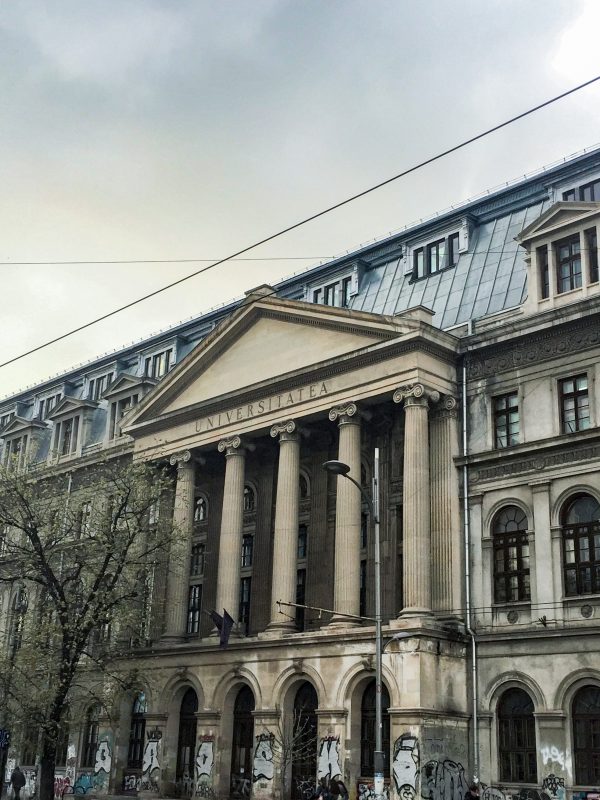


The first thing that struck me in Bucharest, when I arrived in the historic district of Lipscani (see map), was the amount of tags and graffiti that adorned the bottom of the most dilapidated buildings in the city, regardless of the importance or function of the building. For example, the University of Bucharest is covered with inscriptions all over the base of the building. The location of these pieces of graffiti is quite interesting: they are only at eye level on the ground floor of the buildings or at the very top, accessible through the roofs.
The post-Soviet urban context of Bucharest generated many contrasts and this public space became a favourable ground for graffiti. Firstly, because many buildings are abandoned and there are also ruins of Soviet buildings that were never completed.
Also, some of these crumbling buildings are very fragile and are marked by the authorities with a red dot. It indicates the risk of collapse in the event of an earthquake, as there is a high seismic risk in Romania, particularly in Bucharest.
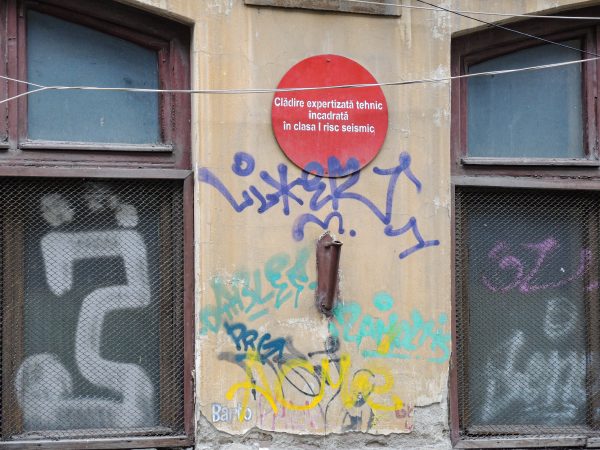


And secondly, Romanian youth, who were bullied and deprived of freedom of expression under the communist regime, were finally able to express themselves after the fall of communism in 1989 and turned to Western culture. The hip-hop movement, with its tag and graffiti, arrived in Romania in the early 1990s and young people seized this means of expression that was visible to all. Trains and abandoned buildings in the city became a privileged creative surface for young Romanian graffiti artists. The system of government repression against graffiti artists was and still is very weak and this fight is not a priority. Romanians do not feel a sense of civil responsibility towards their city. They do not perceive it as their own and are not encouraged to participate in urban planning decisions. Public space is perceived by most Bucharest citizens according to the article by Miruna Tîrcă as “ugly and polluted, populated by thieves, corruption and danger” while the private space of the home is considered a “safe place”. And they are excluded from the collective decisions on city planning by local governments.



What are you waiting for? ” #unoptimist
The first pieces of graffiti that appeared in the 1990s were political. Many of them probably still are but unfortunately I do not speak Romanian and I have not found any recent articles on this phenomenon since the Social Democratic Party came to power in December 2016. The Romanian government is plagued by corruption and the SDP “has constantly amended laws and codes, even threatening the constitutional state, diminishing the rights of the opposition and the powers of the President” according to an article in Libération. The hopes of the Romanian people and the future prospects of the youth have been dashed in a few years by this new policy.
Ms. Negulescu, a professor at UAUIM, told us that half of the university’s students have left in the last two or three years to pursue their studies abroad.
The SDP has since been overthrown in October 2019 by a motion of censure.
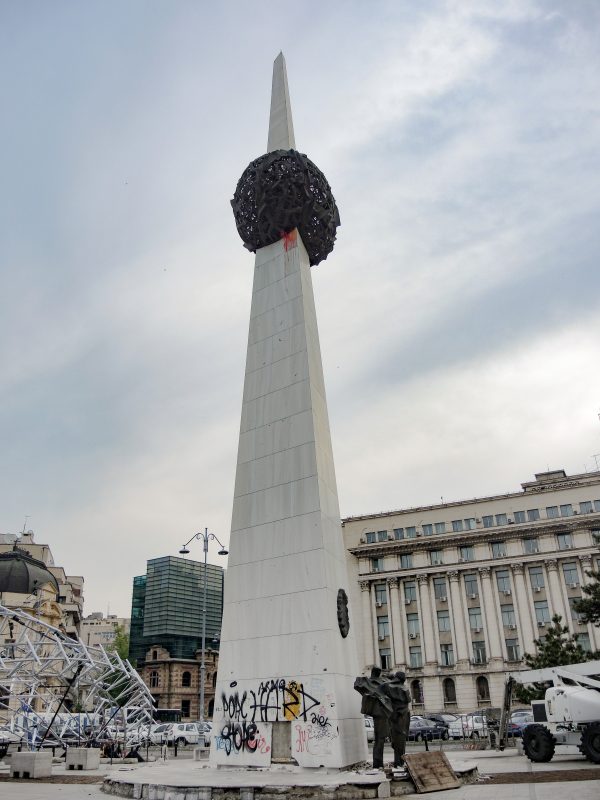


An example of vandal graffiti can be found on the Memorial of Rebirth, on Revolution Square. Inaugurated in 2005, it is dedicated to the “Glory of the Heroes of the 1989 Revolution”, the revolution that led to the overthrow of the communist dictator Nicolae Ceausescu and his wife, and their execution. The monument, though eagerly awaited by Romanians, is controversial for its design. Its author, Alexandru Ghilduş, is a designer, not a sculptor, and critics point to the work’s lack of symbolism. According to them, it does not adequately represent the importance of the event, the suffering of the people and the victims there have been. Mr. Turcanu, a professor at the University of Bucharest, explained that the monument is hated by the people, who call it “potato skewered on a stake”.
The monument is tagged and vandalised at the bottom with a lot of graffiti, and a dash of red paint was thrown on the “potato” in 2012 so high that it has never been erased.
2. The invader artists
AEUL is one of those omnipresent artists on the walls of the city. He paint his character “the piggy-dog“, in many different situations. He has become the symbol of the graffiti community in Bucharest, present throughout the entire urban fabric from the historic centre to the suburbs. He paints his piggies in “crowded, dirty and consumerist” spaces.
I don’t think anyone’s counted them, I lost track around 500. Some disappear, some show up…
Concerning the technique of stencil and collage, two Romanian artists are very present on the walls of Bucharest : Toy Box and Ortaku.

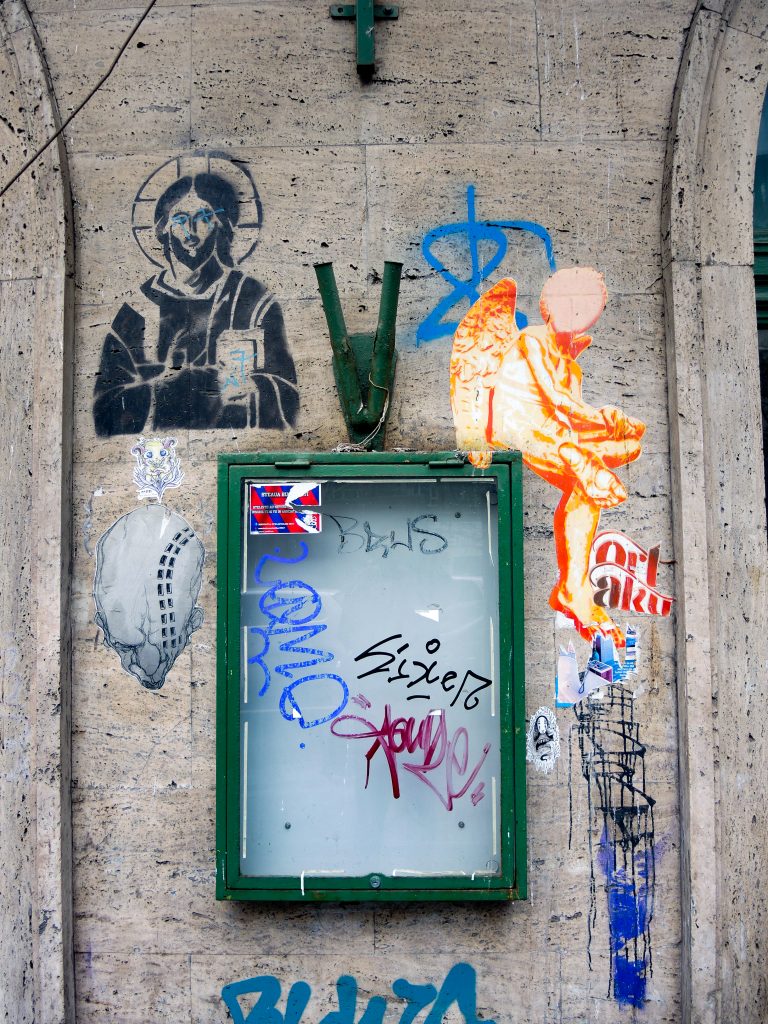



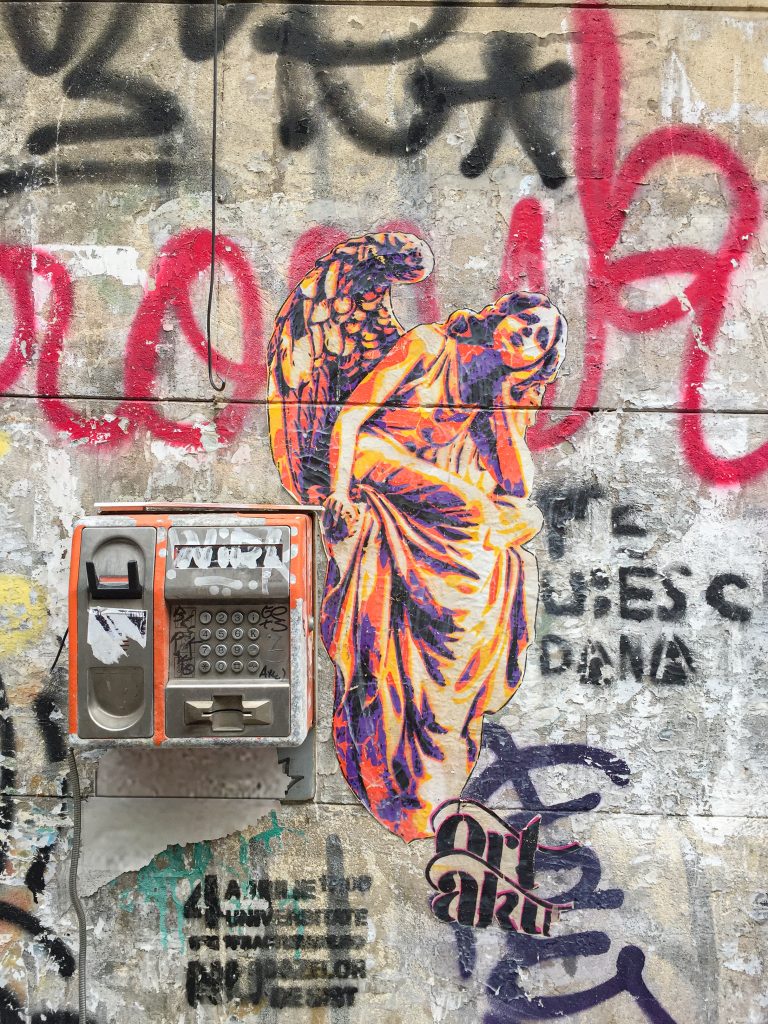
Ortaku 
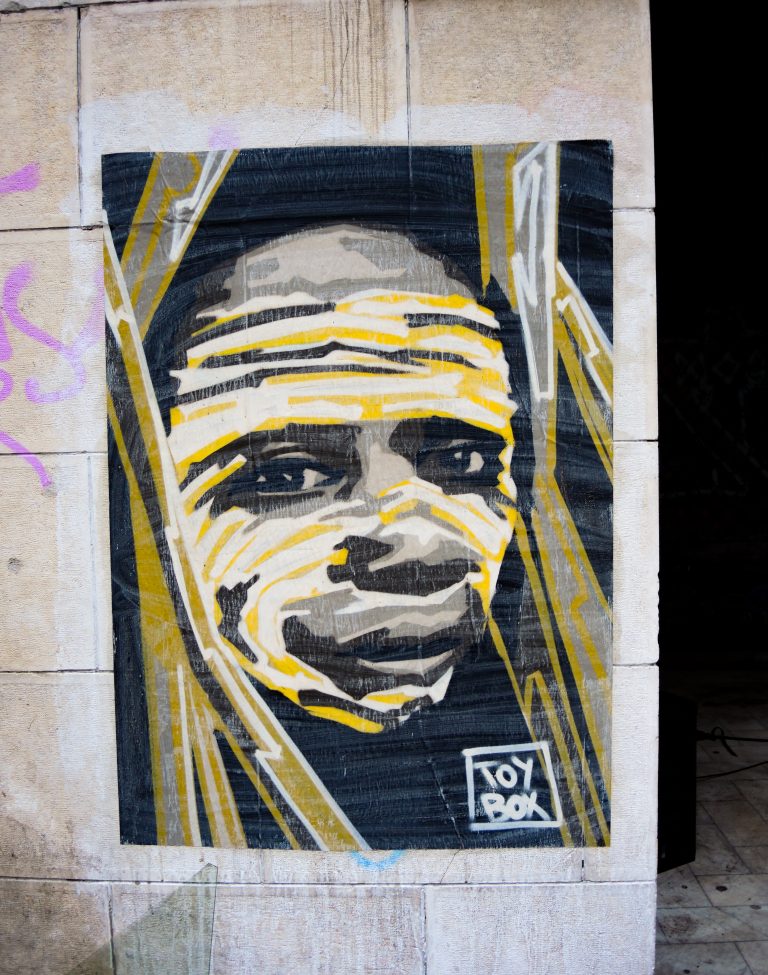

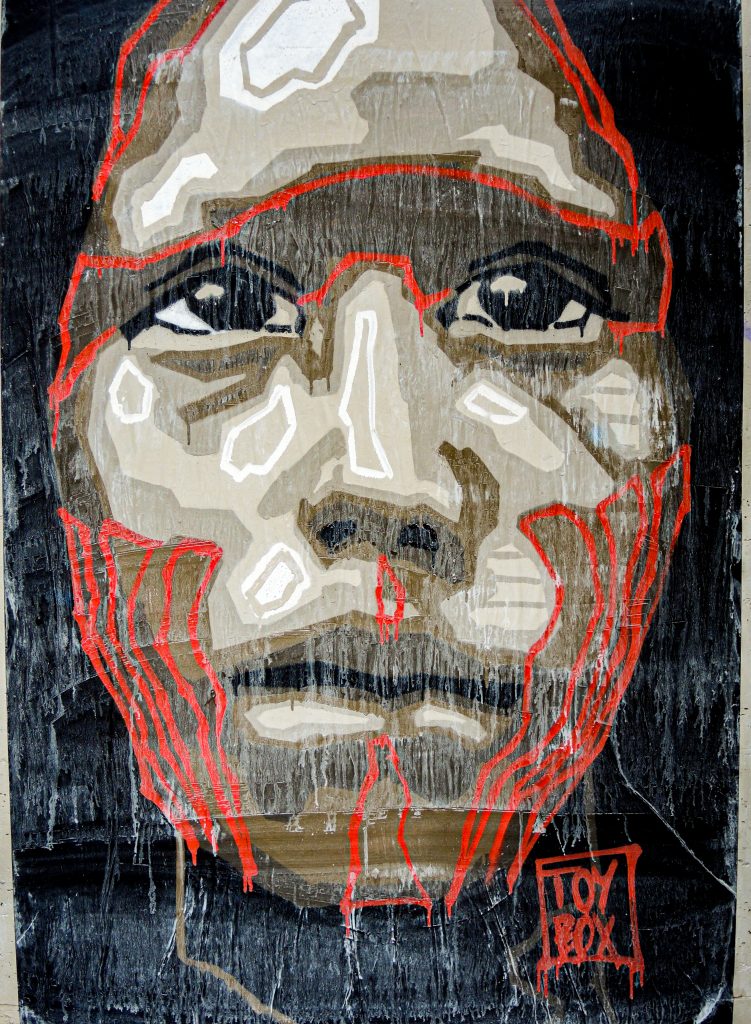

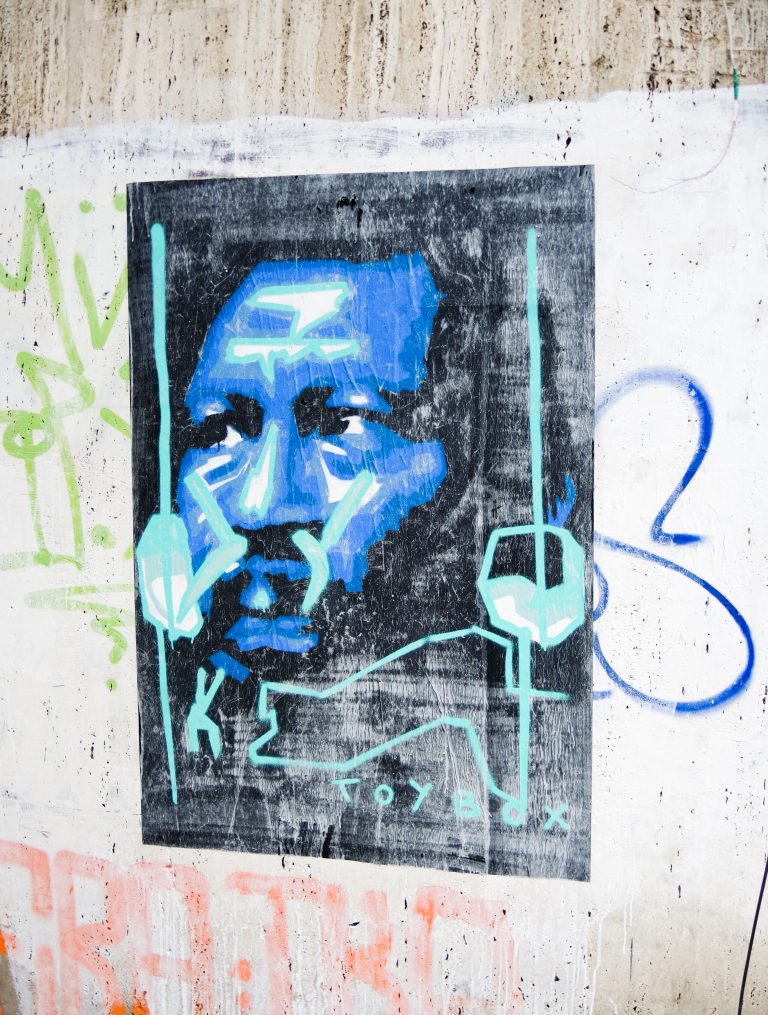
Toy Box



I also spotted a small work in bas-relief on Victoriei Street by J.Ace a street artist from East London who carves his small faces and glues them all over the world. He has been to Bucharest several times, one time for an artistic intervention at the Capitol Cinema / Summer Theatre, an abandoned historical building that has become a hot spot for street art in the city. J.Ace pays homage to the places where he pasted up his works by sculpting portraits of people who used to live in it.
I have found very little information available online about graffiti in Bucharest but I hope I have managed to remain faithful to its history and its current urban context. My bibliography is at the bottom of the article if you want to go deeper into the subject, and if you have any more information, don’t hesitate to share it with us and leave a comment below 🙂.
If like me, you want to go far, far from home and take off right now for Bucharest, I’ll bring you along on a little urban stroll in a second article Bucharest part.2: Urban stroll amongst its murals!
Bibliography :
- [EN] “Street art & Salvation: Getting to know Bucharest through its street art, Wandertooth blog
- [EN] “Art journeys into romanian public spaces, Feeder.ro
- [EN] “Alternative Bucharest. Reactivating vacant spaces in the former Communist capital” by Monica Ciovica
- [EN] “Visual urban cultures of contemporary Bucharest – Between imagination and social realities” by Miruna Tîrcă
- [EN] “Street art in Romania”, Rolandia blog
- [EN] “Memorial of Rebirth, Wikipedia.
- [EN] AEUL interview by Cristina Popa on Feeder.ro
- [EN] “The Mysteries of Bucharest with Street Artist J.Ace / An expected incognito visit at CAPITOL ” on Feeder.ro
- [FR] “Bucharest, the young culture is born in the old warehouses”, Cafe Babel
- [FR] “Romania loses its heads” by Irene Costelian in Libération
- [FR] Presentation file of Romania, site of the French government.
- [FR] “Le Monument de la Révolution de 1989 à Bucarest”, Romania.com
- [FR] “In Bucharest, Ceausescu’s crazy palace”, L’Express
- [FR] “The best of street art in Bucharest”, blog Family Barcelona



